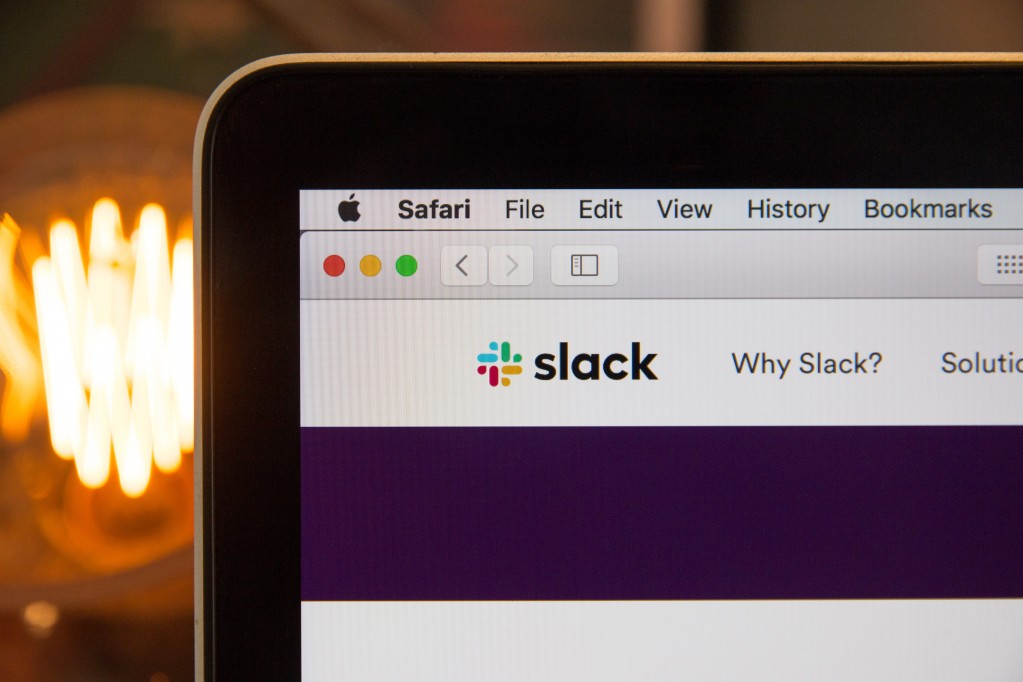Seven Ways to Prepare for a Long-Term Remote Work Situation Due to COVID-19
Photo by Sharon McCutcheon on Unsplash
By now, it's no secret how much COVID-19 has altered the way we live, and alternatively, the way we work. Remote work and COVID-19, on many places on the internet, are now being talked about simultaneously.
This global situation is impacting everyone, regardless of their work arrangement. If you were an onsite company that could conduct business online, you likely shifted to remote work. Nevertheless, if you were already a distributed company, you have probably had to increase your workforce's productivity to handle an increase in your services.
Currently, remote work is no longer an option for people. Implementing remote work with teams has become a necessity. Unfortunately, many companies have not had the opportunity to prepare for the unique perks and challenges of working remotely.
Whether it be the new ways that workers need to manage work-life balance or the isolation and miscommunications that can come with remote work, companies are having to handle the unique situations remote work can bring as they arise.
As the impact of COVID-19 continues to impact the personal and working lives of professionals, it has become more likely that this outbreak will last longer than some may have intended. Many world leaders are acknowledging that this situation could even go into the summer or fall.
So, for those of you, shifting your onsite work to remote work because of COVID-19, are you in a position to handle this development? What happens if temporary becomes long-term and remote work with your teams has to become a permanent option?
What if the Temporary Becomes "Longer" Term?
Again, you may have planned for the remote work and COVID-19 situation to only last a few weeks. However, it is looking more likely that this scenario could take one of these paths:
- Self-quarantine lasts for a much longer time.
- You and your team may decide you prefer a remote or hybrid work arrangement, even after this situation is over.
These scenarios could cause your team to help answer the question of why remote work is considered the future of work. As the economic structure begins to continue to shift because of COVID-19, it is crucial that you strategize ways to keep your company afloat if you have the opportunity to allow your team to work from home.
So, how do you shift from a temporary distributed work situation to a long-term established policy in this era when remote work is becoming the almost inevitable future?
Tips for Turning a Temporary Remote Work Arrangement into a Permanent One
Look Out For the Challenges and Plan for Them:
You may have had to put a remote work plan together hastily, and considering the circumstances, we definitely understand. However, as you begin to work remotely for a more extended period, you need to be aware of the challenges. Some of these may have already come up at your organization. However, here are a few you need to plan for:
-
Burnout - The end of the day is no longer signified by the clock striking 5:00 pm, or another set end time of the day. This makes it highly likely for overworking and burnout to occur because work is just a room or desk away. It is imperative that you discuss work hour expectations with your team. Let your team know that you expect them to sign-off at a specific time and that there are no expectations for workers to answer emails or still work after a designated time. It's also essential to seek regular feedback as you implement remote work with teams. Use pulse surveys and other tools to get rapid feedback from your team about their workload.
-
Miscommunication - This new world of remote work in the era of COVID-19 requires special attention to ensuring detailed communication happens. This step is where you want to emphasize overcommunication. Encourage your team to use instant communication methods like phone calls or a quick video conference for urgent matters or questions. On the other hand, discuss why it is also important to save non-urgent messaging for asynchronous methods like email.
-
Lack of socialization - You want your team to continue to get to know one another through this situation. This can be fixed through some creative uses of virtual messaging. Create Slack channels that allow workers to share photos or memes, have video conference lunches, and encourage staff to connect offline. The impact of COVID-19 is causing everyone to have to stick close to home, and encouraging connections between work colleagues can help lift moods and promote unity.
-
An inefficient workflow - Again, you no longer can call a staff meeting to discuss workflow issues, or work through these problems together physically. So, this is where the use of goal setting, monitoring progress, and effective delegation and communication will come into play. Be sure to work with your team to set reasonable goals, establish systems to track these goals, and set times to discuss them with employees as a group as well as individually.
-
Isolation - Many of our interviewees have commented on the isolation and impact of being away from colleagues. If you are going from onsite work to working remotely, your team likely doesn't have experience with this issue. This situation is where solutions like planning for video conference meetings and encouraging employees to have informal virtual events like tea times or even happy hours work best.
Vivek, an entrepreneur and software engineer, discusses the impact of isolation on his remote work situation:
Social isolation has been the most challenging aspect of remote work. As much as I hate the dynamics of office culture, working remotely made me realize how much I missed the passive social contact that you get in an office. Human contact is critical for work fulfillment. I work around the isolation by using Pragli to stay present with my team and replicate the impromptu conversations that happen naturally in offices. But, developing relationships outside of virtual settings has been the most important for me to prevent loneliness.
There are a variety of challenges associated with remote work, but even if you are already in the process of experiencing these issues, you can create a strategy to deal with these challenges. Don't be afraid to pause and take time to adjust your approach.
Upgrade Your Remote Tools
In response to the unexpected situation of remote work and COVID-19, many remote tool companies are offering extended free trials for remote teams. This is excellent, especially for companies who are new to remote work and may not have the funds to invest in robust tools.
However, if this situation lasts longer than initially thought, then you will have to select new tools for the long-term. This step may involve getting an upgrade or finding a new tool that better works for your team. So, take some time to look at your company's needs, and see if the current tools you have can help you meet your internal and external goals. If not, think about going up a tier or investing in another tool altogether.
Have a Solid Remote Work Policy
For remote work to be the future or a longer-term solution for your staff, you need to create and implement a remote work policy. Develop a plan that details how you will move forward as a location-independent company. Here are the questions your remote work policy should answer:
- When should everyone be available?
- Are there set times for stand-up meetings?
- What tools should everyone have access to?
- How do people ask for time off?
- Are there standard work hours?
This document should answer all the questions your team has about remote work and how it will impact how they work.
Make sure that this documentation is accessible for your team, and that you and everyone else stick to it.
Jan Fex, CEO of DotDee Digital, provides some details of his own remote work policy and expectations:
Everyone has to be reachable on Skype at all times during working hours and have to ensure that they are on a good connection (no working from noisy cafes with poor WiFi i. e.).
Decide What Will Happen to the Physical/Traditional Office
While you may not want to make any decisions in the short-term, this is something you are going to want to think about if you are continuing remote work with your team beyond four to eight weeks. Here are a few things you need to include in your decision-making process:
-
Rent and mortgage - Are you struggling to keep up the mortgage, rent, and utility costs? If so, plan to speak with lenders and banks that you are working with. Discuss some options for deferring payments.
-
Making future plans - If you can afford to keep the facility, you need to determine how you want it to fit in your long-term plans. If you are planning on going back, then the previous step is necessary. However, if you decide that you want to work remotely indefinitely, then consider keeping the building to allow for coworking (if you can afford it), or let it go altogether.
This situation causing remote work due to COVID-19 is temporary. However, whatever you decide regarding your building can have a long-term impact. As a result, take time to think about how you want to move forward with a physical space strategically.
Plan to Mimic Informal Events
Why is remote work the future of work? Well, one of the reasons is that at no other time is it easier to mimic in-office work situations. One of these crucial aspects of work is informal events. Those lunch-and-learns, happy hours, and watercooler talks are essential to your team's development.
They help them to foster trust and enhance collaboration. Data from a LinkedIn study revealed that 46 percent of workers reported feeling happier when they had a friend at work. Happiness leads to less stress, more engagement, and hopefully increased productivity.
So, here are some ways you can promote informal events at your company:
-
Virtual lunch and learns - Have everyone come together to learn a new skill, or become informed about a new process at the company over lunch.
-
Have lunch online - Encourage your team to pick a time that most everyone takes lunch, and meet online to do so. You can even create a separate video conference room just for lunchtime.
-
Develop Slack chats for socialization/checking in - Allow your team to have the space they need to just check in with one another in real-time. Some of your staff may like video calls, but others may want to contribute to discussions without being face-to-face. So, develop a chat for these individuals to connect and share photos, memes, or just messages of goodwill.
-
Online games - Some companies are experimenting with online gaming as a means of socialization. Whether it be Checkers, Scrabble, or an online role-playing game, you may want to experiment with online gaming activities that allow your team to come together to solve problems.
Haley, a VP of Operations, shares her company's strategy for promoting socialization among remote teams:
We get randomly paired with other people on the team for 30 minutes every other week and get to know people on a totally different level than I have in any office environment.
Set up Systems for Feedback
Feedback is crucial for any company. However, it is even more necessary for companies that don't connect in-person. So, make sure you have systems in place that enable you and your employees to share feedback and best practices. Here are some things you and your team should think about as you develop processes to allow for two-way communication regarding performance and goals:
-
Implement routine performance reviews - Make sure that you are giving your team members consistent feedback. Whether it's once a month or a quarter, ensure that your team is aware of your expectations and if they are meeting them.
-
Align performance with agreed-upon goals - Work with your team to set up feasible and SMART goals. Determine how each team member connects to these goals and develop performance metrics that align with these parameters.
-
Allow team members to share their feedback - You want to know if a current setup isn't working. So, make it easy for your team to share their concerns as well as suggestions. This can be done through anonymous pulse surveys, as well as during small group meetings. Encourage your staff to always look for ways to improve the company, as well as the entire remote work process.
Goal-setting and sticking to these parameters is crucial for success. As a result, you need to ensure you are paying attention to these aspects as you move forward as a remote worker.
Set up metrics, align your performance reviews with them, consistently assess employees, and encourage them to share their suggestions.
Also, make sure that this applies to remote work itself as well as the company. Don't forget to keep an eye on productivity to ensure your team is working at their best during this new work arrangement.
Encourage Your Team to Take Care of Their Physical and Mental Health
As many of our interviewees have expressed, working remotely can take a toll on mental and physical health. A consistent lack of socialization, more extended periods of working at home, and a more sedentary work environment can be taxing. So, here is a few ways you can support your worker's mental and physical health during this time of remote work:
-
Set up resources:
-
Telemedicine - Many health insurance providers are offering access to communication with medical and behavioral health doctors over the phone and online. Find out what these resources are for your company's healthcare provider and share them with your employees.
-
Provide healthcare stipends - If you do not currently offer a healthcare package, see if you can provide healthcare stipends for your team so they can seek healthcare resources. For help with connecting remote and digital nomad employees with helpful services, check out InsuredNomads.
-
-
Create helpful challenges you and everyone can do together:
-
Home workout livestream - Some companies like Planet Fitness are offering home workout sessions. Connect your team with resources like this, or encourage someone to develop a workout routine that the staff can do together.
-
Individual exercise challenge - Develop an engaging challenge or incentive for your team to participate in various activities throughout the week.
-
Sharing healthy recipes - If you have an internal company portal or a Slack channel, invite your team to share things like healthy recipes, activity ideas, and helpful health-related resources.
-
Shivani, a content strategist, and writer, discusses the impact physical activity has had on her health and remote work routine:
Working out is the most important thing for me to avoid burnout. I run and lift weights, and I occasionally swim. When I'm at the gym, my phone is on airplane mode. It's brilliant to help clear my head and give me an hour a day to just focus on myself and not on work or anything else. That hour every day translates into a better mood, better health, and a better night's sleep. Endorphins are a wonderful thing!
Again, you want to promote activities, so your team can overcome some of the challenges associated with remote work. Taking an active step to provide these resources will help them be at their most productive.
Remote Work Can be A Positive Turning Point for Your Company
Photo by Ryan Mendoza on Unsplash
This is a tough situation, and it's okay to be anxious. Nevertheless, going remote may be the transition your company needs to continue to excel. Ultimately, any tool you purchase or policy implemented should have the intention of making collaboration and communication more straightforward. They should make it easy for your team to do the work they need to do.
As you make this transition, we are here to help, and we invite you to check out our additional resources:
- Remote Work Tools Page
- Interviews
- RemoteHabits Jobs Page if you are on the job hunt
- Also, for those new to working remotely, check out Fundera's guide on How to Stay Motivated When Working Alone
We wish you health and safety through this time.
in Uncategorized
